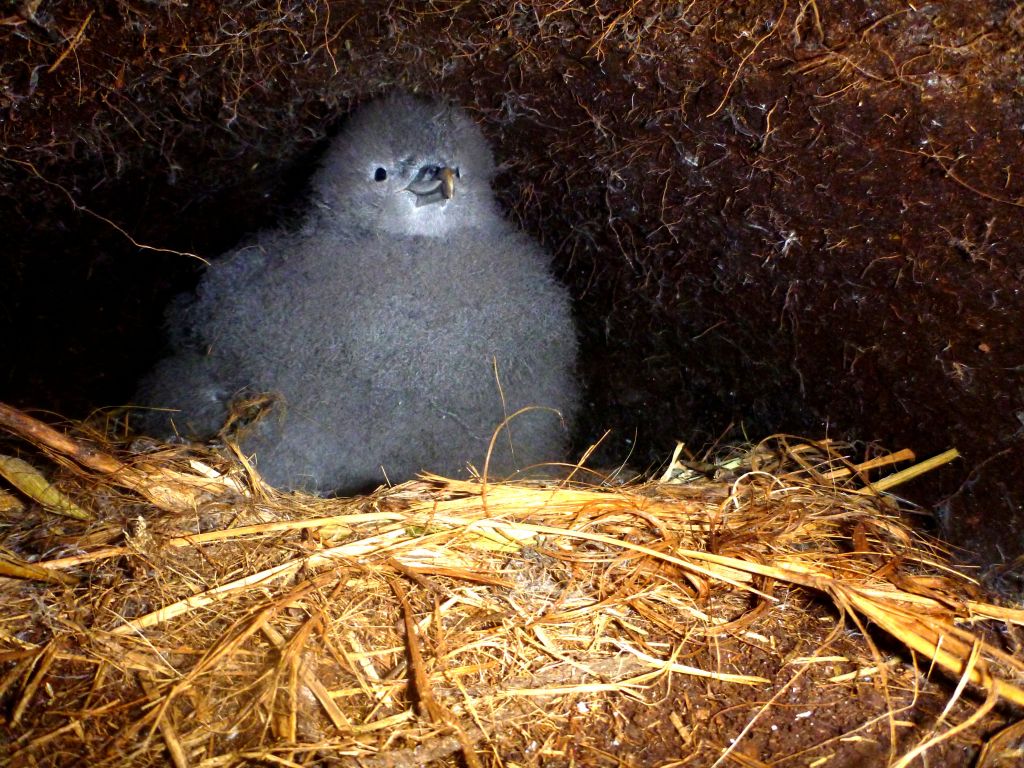 A Grey Petrel chick in its burrow on Macquarie Island; photograph courtesy of Penny Pascoe
A Grey Petrel chick in its burrow on Macquarie Island; photograph courtesy of Penny Pascoe
Jeremy Bird (Institute for Marine and Antarctic Studies, University of Tasmania, Australia) and colleagues have published open access in the journal Conservation Biology on the recovery dynamics of burrowing seabirds, including the ACAP-listed Grey Petrel Procellaria cinerea, on Australia's Macquarie Island since the island’s invasive predator eradication.
The paper’s abstract follows:
“Eradicating invasive predators from islands can result in substantial recovery of seabirds, but the mechanisms that drive population changes remain poorly understood. Meta-analyses have recently revealed that immigration is surprisingly important to the recovery of philopatric seabirds, but it is not known whether dispersal and philopatry interact predictably to determine rates of population growth and changes of distribution. We used whole-island surveys and long-term monitoring plots to study the abundance, distribution, and trends of 4 burrowing seabird species on Macquarie Island, Australia, to examine the legacy impacts of invasive species and ongoing responses to the world's largest eradication of multiple species of vertebrates. Wekas (Gallirallus australis) were eradicated in 1988; cats (Felis catus) in 2001; and rabbits (Oryctolagus cuniculus), black rats (Rattus rattus), and mice (Mus mus) in 2011–2014. We compared surveys from 1976–1979 and 2017–2018 and monitoring from the 1990s and 2000s onward. Antarctic prions (Pachyptila desolata) and white-headed petrels (Pterodroma lessonii) increased ∼1% per year. Blue petrels (Halobaena caerulea) and gray petrels (Procellaria cinerea) recolonized following extirpation from the main island in the 1900s but remained spatially and numerically rare in 2018. However, they increased rapidly at 14% and 10% per year, respectively, since cat eradication in 2001. Blue and gray petrel recolonization occurred on steep, dry, west-facing slopes close to ridgelines at low elevation (i.e., high-quality petrel habitat). They overlapped <5% with the distribution of Antarctic prion and white-headed petrels which occurred in suboptimal shallow, wet, east-facing slopes at high elevation. We inferred that the speed of population growth of recolonizing species was related to their numerically smaller starting size compared with the established species and was driven by immigration and selection of ideal habitat.”
An article by the authors about the study can be found in the research-based news and analysis publication, The Conversation, here.
, here.
Reference:
Bird, J. P., Fuller, R. A., & Shaw, J. D. (2024). Patterns of recovery in extant and extirpated seabirds after the world's largest multipredator eradication. Conservation Biology, e14239. https://doi.org/10.1111/cobi.14239
18 March 2024

 English
English  Français
Français  Español
Español